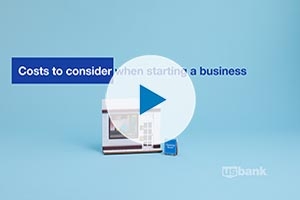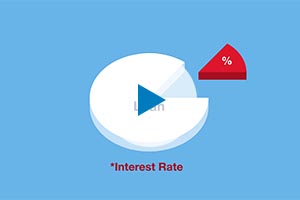
8 ways for small business owners to manage their cash flow

What is a home equity line of credit (HELOC) and what can it be used for?

3 ways to secure purchasing power

Housing market trends and relocation impact

An investor’s guide to marketplace lending

What is a CLO?

Beyond Mars, AeroVironment’s earthly expansion fueled by U.S. Bank

ABL mythbusters: The truth about asset-based lending

Collateral options for ABL: What’s eligible, what’s not?

Can ABL options fuel your business — and keep it running?

Maximizing your infrastructure finance project with a full suite trustee and agent

Evaluating interest rate risk creating risk management strategy

Payment industry trends that are the future of POS

Tech lifecycle refresh: A tale of two philosophies

Changes in credit reporting and what it means for homebuyers

4 benefits of independent loan agents

At your service: outsourcing loan agency work

Middle-market direct lending: Obstacles and opportunities

Streamline operations with all-in-one small business financial support

Staying organized when taking payments

How to identify what technology is needed for your small business

How to fund your business without using 401(k) savings

Costs to consider when starting a business

How to get started creating your business plan

What is needed to apply for an SBA loan

How to establish your business credit score

Tips for realtors to help clients get their homeownership goals back on track

How small business owners can budget for the holiday season

4 small business trends that could change the way you work

Common small business banking questions, answered

3 signs it’s time for your business to switch banks

Webinar: Leading through uncertainty: CFO Insights Executive Roundtable

7 uncommon recruiting strategies that you may not have tried yet

How increased supply chain visibility can combat disruptors

6 common financial mistakes made by dentists (and how to avoid them)

Unexpected expenses: 5 small business costs to know and how to finance them

Strengthen your brand with modern POS technology

Technology strategies to complement your business plan

Business credit card support

Business credit card 101

Meet your business credit card support team

How to apply for a business credit card

What kind of credit card does my small business need?

Do I need a credit card for my small business?

How jumbo loans can help home buyers and your builder business

When to consider switching banks for your business

How to choose the right business checking account

5 tips to help you land a small business loan

How to choose the right business savings account

5 questions business owners need to consider before taking out a loan

Does your side business need a separate bank account?

Leverage credit wisely to plug business cash flow gaps

How to establish your business credit score

The essential business tips for tax deductions

How to make the most of your business loan

How to accept credit cards online

Do you need a business equipment loan?

Break free from cash flow management constraints

5 tips for managing your business cash flow

How Everyday Funding can improve cash flow

How do interest rates affect investments?

Student checklist: Preparing for college

The A to Z’s of college loan terms

Co-signing 101: Applying for a loan with co-borrower

Practical money skills and financial tips for college students

How I did it: Paid off student loans

Personal loans first-timer's guide: 7 questions to ask

3 awkward situations Zelle can help avoid

What’s your financial IQ? Game-night edition

Common unexpected expenses and three ways to pay for them

Myths vs. facts about savings account interest rates

Your financial aid guide: What are your options?

Is a home equity loan for college the right choice for your student

Parent checklist: Preparing for college

How to apply for federal student aid through the FAFSA

What to consider before taking out a student loan

Are you ready to restart your federal student loan payments?

Everything you need to know about consolidating debts

How to use debt to build wealth

What’s a subordination agreement, and why does it matter?

Understanding the true cost of borrowing: What is amortization, and why does it matter?

7 steps to keep your personal and business finances separate

Your quick guide to loans and obtaining credit

Dear Money Mentor: How do I begin paying off credit card debt?

Dear Money Mentor: What is cash-out refinancing and is it right for you?

Overcoming high interest rates: Getting your homeownership goals back on track

What are conforming loan limits and why are they increasing

Money Moments: How to finance a home addition

How I did it: My house remodel

How you can take advantage of low mortgage rates

Is it the right time to refinance your mortgage?

What to know when buying a home with your significant other

These small home improvement projects offer big returns on investment

Should you get a home equity loan or a home equity line of credit?

Mortgage basics: What’s the difference between interest rate and annual percentage rate?

Is a home equity line of credit (HELOC) right for you?

How to use your home equity to finance home improvements

How do I prequalify for a mortgage?

Can you take advantage of the dead equity in your home?

8 steps to take before you buy a home

6 questions to ask before buying a new home

4 questions to ask before you buy an investment property

10 uses for a home equity loan

Test your loan savvy

Take the stress out of buying your teen a car

Questions to ask before buying a car

What you should know about buying a car

How to choose the best car loan for you

